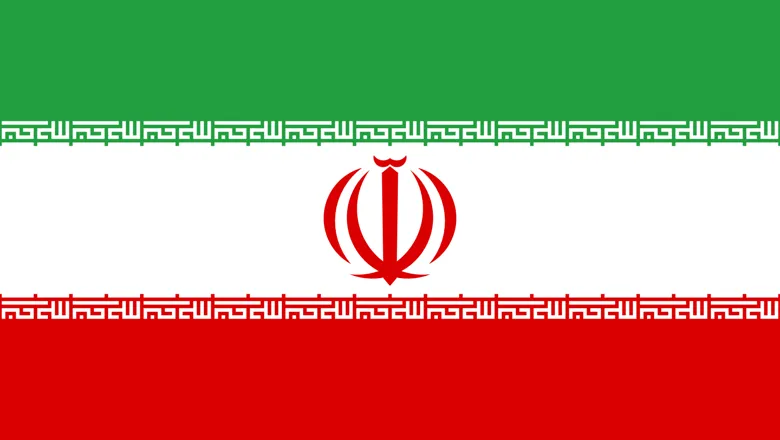24 October 2018
Iran and the FATF: more effort needed
Emma Scott and Jean-Annet de Saint Rapt, Research Assistants, Project Alpha
The FATF plenary which took place on 17-19 October 2018 decided to continue the suspension of counter-measures against Iran. The Plenary said it was disappointed with the pace of Iran’s AML/CFT reforms. Iran now has until February 2019 to bring the necessary legislation into force, in line with international standards or risk a call for counter-measures.

Iran has been categorised as a high-risk jurisdiction and is one of only two countries on the FATF ‘call for action’ list (or blacklist), together with the DPRK. A call for action requests all countries to impose countermeasures against the jurisdiction. Countermeasures include, but are not limited to 1) the application of enhanced due diligence, 2) refusing the establishment of subsidiaries, branches or representative offices of financial institutions, 3) limiting business relationships or financial transactions with the identified country or persons in that country, and 4) requiring financial institutions to review and amend, or even terminate, correspondent relationships with financial institutions in the country concerned.[1] Since the FATF implemented its new monitoring system in 2008, Iran has been permanently on the black list. Although, the FATF has recognised that Iran made some efforts to comply, the risk of terrorism financing emanating from Iran remains a significant obstacle.
Iran Tries to Ease its Relationship with the FATF
In 2016, Tehran agreed to cooperate with the FATF financial body. Tehran’s motivation was that it wanted to escape the FATF blacklist to help it better integrate into the world economy after the signing of the Joint Comprehensive Plan of Action (JCPOA). Simultaneously, President Hassan Rouhani initiated major banking sector reforms, which aimed to contribute to the development of the economy and attract foreign investment. Transparency and regulation are key to such reforms as these would bring Iran into compliance with international norms such as the Basel Standards, International Accounting Standards (IFRS) and FATF recommendations.
To address its AML/CFT deficiencies, in 2016, the FATF set an Action Plan which Iran had to complete. Iran agreed to follow this Action Plan,[2] and in response the FATF suspended the call for countermeasures for a 12-month period but left Iran on its public statement. The FATF pubic statement currently includes a short summary of the recent actions taken by Iran in accordance with its Action Plan, and lists the remaining deficiencies, that still need to be addressed, in its ani-money laundering and combating the financing of terrorism regime. Only when all the action points are complete will Iran be in full compliance with the FATF requirements. In 2017, “In light of Iran’s demonstration of its political commitment and the relevant steps it has taken in line with its Action Plan”,[3] the FATF decided to continue its suspension.
Outstanding Issues of the FATF Action Plan on Iran
- Criminalise terrorist financing (including removing exemptions)
- Freeze terrorist assets
- Ensure a customer due diligence regime
- An independent Financial Intelligence Unit
- Identify and sanction unlicensed money/value transfer service providers
- Implement the Palermo and TF Conventions
- Verify wire transfers contain complete information
- Establish a range of penalties for ML offense
- Ensure legislation to provide for confiscation of property of corresponding value
In February 2018, for the same reason, the FATF prolonged again the suspension of counter-measures,[4] but in June 2018, in its public statement, the FATF expressed its disappointment with Iran for failing to implement the Action Plan. However, it maintained the suspension “Given the Iranian government’s continued efforts to finalize and pass amendments to its AML and CFT laws”[5].
By this stage, the need for Iran to cooperate with the FATF became even more pressing. The U.S., under the Trump Presidency, had withdrawn from the JCPOA and decided to re-impose sanctions. Consequently, Iran’s economy witnessed a withdrawal of foreign investment and a depreciation of the rial. By complying with the FATF recommendations, Iran hopes to resolve its economic problems and minimise its differences with the remainder of the international community.
A number of pieces of legislation were sent to the Iran’s Parliament. The Parliament had already approved the Bill of Amendment to the Countering Financing of Terrorism Act, which amongst other things, lays out a legal basis for the confiscation of assets or funds to commit terrorism financing, and a Bill of Amendment to the Anti-Money Laundering Act. In September it passed a bill to join the UN Convention Against Transnational Organised Crime (i.e. the Palermo Convention), and finally, Sunday 7 October saw the Parliament pass a bill to join the 1999 International Convention for the Suppression of the Financing of Terrorism, albeit with a number of exemptions.
Iran’s Definition of Terrorism
The FATF Action Plan for Iran requires it to criminalise terrorist financing, “including by removing the exemption for designated groups “attempting to end foreign occupation, colonialism and racism””.[6] In Iran’s domestic legislation bringing into force the 1999 Convention for the Suppression of the Financing of Terrorism, Iran’s lawmakers carved out an exemption to article 2(b) of the Convention by stating that struggle against colonial domination and foreign occupation does not apply to the country’s definition of terrorism. The Parliamentarians further carved out an exemption to Article 6, maintaining that it doesn’t apply to the right of legitimate struggle.
That said, a number of other Middle Eastern regional states including Egypt, Jordan, and Yemen, issued reservations when joining the 1999 Convention, stating that they do not consider acts of national liberation as terrorism, and they are not on the FATF blacklist. So, that should not be an impediment to Iran’s implementation of the FATF’s standards. While the FATF may overlook Iran’s non-compliance with action point 1 if it complies with the other action points, so far, this is not been the case. The difficulty for Rouhani’s government will be to take concrete steps in freezing assets and implementing the laws passed, which is what the FATF expects.
Iran’s Banking Problems: Get in the Way
A broader problem for Iran is the implementation of the banking sector reform. Last March, the International Monetary Fund pointed out that the Iranian banking system had been in “distress” now for a number of years.[7] The IMF called for urgent comprehensive restructuring and recapitalisation of the banks. Since that report, the economic situation in the country has deteriorated due to the U.S. withdrawal from the JCPOA and the re-imposition of sanctions. Thus, reform has become even more critical as the monetary crisis and inflation have worsened.
The problem with Iran’s economy is that for decades, the Iranian financial sector consists not only of regulated but also unregulated financial actors, which is one of the issues the FATF has with Iran. Some of these unlicensed actors, usually affiliated with politico-religious groups, have very limited due diligence procedures on their clients and transactions. Additionally, such unregulated actors can promise to pay high interest rates on deposits to fund credit activities, and subsequently go bankrupt resulting in significant losses for Iranian businesses and individuals. This situation also acts as a deterrent to foreign investors willing to take a risk to invest in Iran. Furthermore, international standards on credit analysis and capital requirements are not often met.
Rouhani’s reforms need to restructure the banking system in a way that will help the economy recover. The intension is to place all credit and financial institutions under Central Bank supervision, while the Central Bank intends to comply with the Basel Standards, which, for instance, set capital requirements for credit activities. For starters, in 2017, the latter issued new policies to be implemented by financial institutions.
Thus, as part of the banking reforms, Rouhani and his administration have decided to implement the FATF recommendations. The implementation of these international standards will make Iran more likely to be accepted into the international finance system. As a senior member of the Iranian government put it: “there is no guarantee all our problems would be solved if we comply […with the FATF] but I am sure that not complying would give the U.S. more excuses to increase our problems.”
Reaching a Consensus at the FATF: A Long Process
The decision to remove Iran from the blacklist is a FATF Plenary consensus decision. However, the U.S., holding the influential position of Chair for a one-year period, is likely to continue to push for Iran to remain on the list. The other countries may not want to keep Iran on the list if it continues its efforts to comply with the recommendations.
An on-site inspection team needs to deploy to Tehran, and report back to the Plenary on the implementation of the Action Plan, before Iran is removed from the list. The improvement of Iran’s relationship with the FATF will continue to be a gradual process as Iran slowly attempts to improve and implement a more stringent regulatory environment and reform its banking system.
Ultimately, even if Iran complies with the FATF recommendations and takes action against designated individuals or entities on UN sanctions lists, the issue of U.S. sanctions lists will remain. As a result, even with Iranian reforms, there remains the risk that any entity trading with Iran will be accused by the U.S. of sanctions evasion, and henceforth could become the target of secondary sanctions.
[1] The FATF Recommendations: International standards on combating money laundering and the financing of terrorism and proliferation, updated February 2018,available at http://www.fatf-gafi.org/publications/fatfrecommendations/documents/fatf-recommendations.html
[2] Outcomes of the Plenary meeting of the FATF, Busan Korea, 22–24 June 2016, available at http://www.fatf-gafi.org/countries/a-c/austria/documents/plenary-outcomes-june-2016.html#iran
[3] FATF Public Statement, 23 June 2017, available at http://www.fatf-gafi.org/publications/high-riskandnon-cooperativejurisdictions/documents/public-statement-june-2017.html
[4] FATF Public Statement, 23 February 2018, available at http://www.fatf-gafi.org/publications/high-riskandnon-cooperativejurisdictions/documents/public-statement-february-2018.html
[5] FATF Public Statement, 29 June 2018, available at http://www.fatf-gafi.org/publications/high-riskandnon-cooperativejurisdictions/documents/public-statement-june-2018.html
[6] FATF Public Statement, 19 October 2018, http://www.fatf-gafi.org/publications/high-riskandnon-cooperativejurisdictions/documents/public-statement-october-2018.html
[7] International Monetary Fund, Islamic Republic of Iran, IMF Country Report Mo. 18/93, March 2018 available at https://www.imf.org/~/media/Files/Publications/CR/2018/cr1893.ashx

